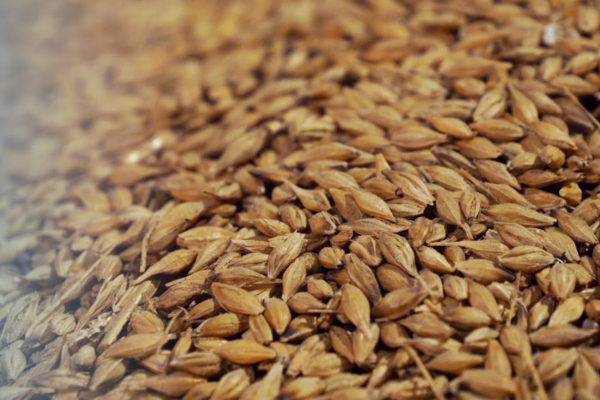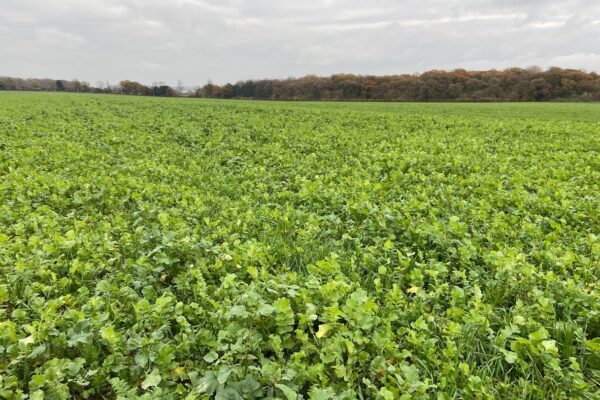Applicability of Slurry Separation and Acidification on Farms in Scotland
18 July 2024This article is part of the Climate Change & Carbon Research Briefings series. More articles in the series can be found below:
- Understanding Natural Capital Markets
- Collecting On-Farm Biodiversity Data with Bioacoustics
- Faba Beans for Alternative Protein and Reducing Monogastric Carbon Footprint
- Advancing Agricultural Practices, Reducing Emissions and Ensuring Sustainable Growth in the Face of Climate Challenges
- Making Sense of Soil Carbon
- Are Methane Inhibitors a Silver Bullet for the Sustainability of Beef and Dairy?
- Mitigating N2O Emissions and Enhancing Yields with Inhibitors and Liming
- Low Emissions Livestock Breeding - The What and the Why
Benefits and uptake
The uptake of slurry separation and slurry acidification technologies in the UK has been growing, driven by both environmental protection regulations and the recognition of their applicability and benefits for sustainable agricultural production. Recent research on slurry separation and slurry acidification has highlighted significant potential for application in the UK.
While slurry separation is more widely adopted due to its direct benefits in nutrient management and water quality, slurry acidification is gaining traction as an important method for reducing ammonia emissions and retaining slurry nitrogen content at spreading. Continued support from government policies and subsidies will likely further increase the adoption rate and feasibility of using these technologies across the UK agricultural sector.
This research briefing will summarise the current state of play of slurry acidification and separation in research, its applicability and benefits.
Methods of slurry separation
Slurry separation involves dividing the slurry into liquid and solid fractions. Mechanical separation technologies such as screw press and decanting centrifuges split the slurry into their respective liquid and solid portions, both of which may undergo further downstream processing. Recent research from the Agri-Food and Biosciences Institute (AFBI) in Northern Ireland, has investigated mechanical separation methods, such as screw press and decanting centrifuge technologies and have concluded that:
- Screw Press Separation is perhaps suitable for most livestock farms, providing a good balance between capital and operational costs and efficiency.
- Decanting Centrifuge Separation is used for higher levels of phosphorus (P) removal and is typically adopted by larger farms or those with significant manure volumes such as larger diary enterprises.
Mechanical separation is particularly useful in areas of intensive livestock farming, where nutrients available in livestock slurries and AD may be higher than the nutritional requirement of the crop on-farm. This can lead to adverse environmental outcomes including loss of nutrients such as nitrogen (N) and P to water bodies via overland flow and leaching to groundwater, and as gaseous emissions of N to the atmosphere.
The separation and export of manure off-farm is therefore a potential solution to the issue of over-application beyond crop demand, and subsequent risk of environmental pollution, in particular loss of P to water bodies – especially in Nitrate Vulnerable Zones (NVZs). These methods allow for the removal of phosphorus from the solid fraction, which can then be exported off-farm or used in anaerobic digestion systems.
Mechanical separation of slurries and AD typically produces:
- a solid fraction with a higher percentage dry matter and P content, and lower available N, than the initial source;
- and a liquid fraction with lower percentage dry matter content, with lower P, but higher bio-available N content for crop uptake than the source material.
However, despite potential benefits for environmental outcomes such as P export off-farm – there are potentially trade-offs in terms of gaseous emissions at storage and at land spreading in terms of potentially higher nitrous oxide and ammonia emissions. Research in quantifying this trade-off is still undergoing in the UK and across Europe.
The adoption of slurry separation technology in the UK is increasing, particularly among larger livestock farms and those involved in anaerobic digestion. This trend is supported by research from institutions like the Agri-Food and Biosciences Institute (AFBI), which highlights the environmental and operational benefits of slurry separation (Agriland.ie).
Emissions of GHG and ammonia at storage and field application
The magnitude of GHG and ammonia emissions are directly affected by the following factors:
- storage temperature
- ambient temperatures at field application
- inherent slurry biochemical characteristics
- slurry livestock type
The ammoniacal nitrogen as a proportion of total nitrogen in the liquid portion, as well as organic content and dry matter content can affect the infiltration rate and level of nitrogen immobilisation at land spreading. Research has shown that quicker infiltration should result in lower rates of N volatilisation as ammonia at field application (Amon et al., 2006). Acidification of the liquid fraction to pH 5.5, not much lower than the pH of rainfall, will potentially reduce N volatilisation further – by up to 92% (Dinuccio et al., 2008).

Figure 1: NH3 emissions during storage and after field application of dairy cattle slurry.
However, reduced ammonia emissions at land spreading is often counterbalanced with much larger emissions of ammonia during storage (Figure 1) – this is mainly due to the processes that occur during composting. Due to the high N losses associated with storage, it is recommended to apply the solid fraction to land as soon as possible after separation; if storage is unavoidable, anaerobic conditions should be maintained as much as possible (Lyons et al., 2021). Another mitigation strategy to reduce ammonia emissions during storage is the addition of chopped straw to the solid fraction (Amon et al., 2006).
Slurry separation has been found to be an effective method of reducing GHG emissions, particularly those of methane during storage. Amon et al. (2006) found that CO2-e emissions over a 100-day storage period were reduced compared to untreated slurry, for both pig and dairy slurry by almost 50% and 47% respectively. However, it is to be noted that other studies have found that the mechanical separation of cattle slurry has been found to increase CO2-e emissions by 30% when compared with raw slurry during storage (Dinuccio et al., 2008). In general emissions at land spreading can be reduced via low emission spreading technologies and strategic timing of application. Separation is a viable method to lower emission, if losses from the solid fraction during storage can be kept to a minimum.
Slurry acidification
Slurry acidification is a technique used to reduce ammonia emissions by lowering the pH of the slurry. This process has been found to effectively decrease ammonia and methane emissions, contributing to improved air quality and reduced greenhouse gas emissions. Research shows that acidification can be as effective as slurry injection in minimising nitrogen loss, which is crucial for maintaining soil fertility and reducing environmental pollution (Farmers Weekly).
Ammonia (NH3) is formed from the breakdown of urea and other nitrogen-containing compounds in slurry. This process is highly pH-dependent. At higher pH levels, the equilibrium between ammonium ions (NH4+) and ammonia (NH3) shifts towards the formation of NH3, which is a volatile gas. By acidifying the slurry (typically by adding acids like sulphuric acid), the pH is lowered. This shift in pH favors the presence of ammonium ions (NH4+), which are not volatile and remain dissolved in the slurry.
Acidification also inhibits the production of methanogenic bacteria, which produce methane in anaerobic conditions such as in slurry storage and are sensitive to pH levels. Acidification helps retain more nitrogen in the form of ammonium, which is beneficial for crop growth when the slurry is applied as fertilizer. This improved nitrogen retention reduces the need for synthetic fertilisers, thereby lowering the overall environmental impact of farming. Lowering the pH of slurry can also reduce the emission of odorous compounds, improving air quality around storage and application sites.
The uptake of slurry acidification in the UK is currently less widespread compared to slurry separation but is gaining attention due to its effectiveness in reducing ammonia emissions. This method is particularly noted in intensive livestock farming sectors. The main challenges for implementation of slurry acidification are the cost of initial investment in systems (although it can provide cost savings over time), as well as further research and adoption in practice. Research in the UK and elsewhere continues to explore the optimal conditions and methods for slurry acidification, including the types of acids used, application rates, and the long-term effects on soil health and crop yields.
Funding and applicability
In the UK, these techniques are becoming increasingly relevant. The government and various agricultural bodies are promoting the adoption of advanced slurry management practices to meet environmental regulations and sustainability goals. Grants and subsidies are often available to help farmers invest in necessary technologies like slurry separators such as the current Slurry Infrastructure Grant in England, however this is still not available in Scotland under AECS or similar schemes, to date. However, it is likely that such technologies will be supported in the near future, under subsequent tranches. Additionally, the use of acidified slurry is encouraged to align with environmental targets for reducing ammonia emissions from agriculture.
Overall, the implementation of slurry separation and acidification in the UK is feasible and beneficial. These methods not only enhance nutrient management and reduce environmental impact but also support sustainable agricultural practices (Agriland.ie) (Farmers Weekly).
Rachael Ramsey, SAC Consulting
and
Anna Sellars, SAC Consulting
Further Resources
References
Amon, B., Kryvoruchko, V., Moitzi, G., & Amon, T. (2006). Greenhouse gas and ammonia emission abatement by slurry treatment. International Congress Series, 1293, 295–298. https://doi.org/10.1016/J.ICS.2006.01.069
Dinuccio, E., Berg, W., & Balsari, P. (2008). Gaseous emissions from the storage of untreated slurries and the fractions obtained after mechanical separation. Atmospheric Environment, 42(10), 2448–2459. https://doi.org/10.1016/J.ATMOSENV.2007.12.022
Lyons, G. A., Cathcart, A., Frost, J. P., Wills, M., Johnston, C., Ramsey, R., & Smyth, B. (2021). Review of Two Mechanical Separation Technologies for the Sustainable Management of Agricultural Phosphorus in Nutrient-Vulnerable Zones. Agronomy 2021, Vol. 11, Page 836, 11(5), 836. https://doi.org/10.3390/AGRONOMY11050836
Sign up to the FAS newsletter
Receive updates on news, events and publications from Scotland’s Farm Advisory Service
















